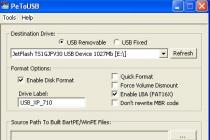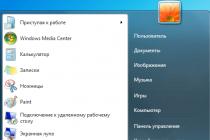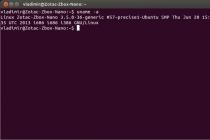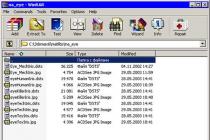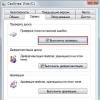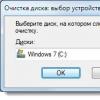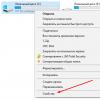 |
 |
|
 |
 |
 |
 |
 |
 |
Contents of delivery:
- Telephone
- Battery
- Li-Ion battery 2600 mAh
- Charger with detachable USB cable
- Instruction
- Guarantee
Positioning
Samsung has been successful with the Galaxy line, with the Galaxy S3 selling 20 million units in the first 5 months, and the total circulation of this device will exceed 60 million units. If we talk about the previous device, the Galaxy S2 was also a successful product, but in the first 5 months it was able to sell only 10 million units, which is not bad at all, but does not sound as beautiful as in the case of the Galaxy S3.
In 2013, Samsung has two goals - the first and main goal is to overtake Apple in sales of a single product, that is, to make the Galaxy S4 beat the iPhone 5, and also to keep sales at the time of the release of the iPhone 5s or any other Apple model. The company calculated that they could achieve sales of 40 million units in the first five months. The second task is to provide a flagship smartphone, a universal solution for different consumer groups, among which a significant part are the owners of previous devices in the Galaxy line - primarily the Galaxy S2.
Based on the market, company shares and what happened in 2012-2013, two smartphones can be seriously considered - the Apple iPhone and samsung galaxy, these two lines made up the main competition, while all the rest acted as catching up and could not even come close to these products. In the Android smartphone market, the gap between Galaxy and its closest competitors in sales is not at times, but by orders of magnitude, and this is noticeable to the naked eye. The gap between the iPhone and the latter in sales is significant, but not by orders of magnitude; in the third quarter of 2012, the Galaxy S3 even temporarily took first place in global sales. With the release of S4, the situation may change in favor of Samsung.
For consumers, the Galaxy S4 is the most faceless device in terms of design, which repeats the appearance of the previous devices in the line, very much resembles them. If we talk about whether this is good or bad, I don’t presume to judge, but I can say that this approach works and sales speak for themselves. Look for a bright device in terms of design, the Galaxy S4 is unlikely to suit you. This model is aimed at a very wide range of consumers, as a result, it was made as inexpressive as possible. A bar, which each due to the screen, selected programs and accessories, will be able to turn into their own individual, unique phone. How effective this approach will be, we will see in a month, but for now we can say that there are all the prerequisites for success (suffice it to recall those discussions that are bubbling around the apparatus).
In my opinion, the age audience of this device is the maximum - from children to the elderly, and the number of functions aimed at adapting the phone to such different consumers is very large. This also applies to lifestyle - a very great potential has been laid in the phone, which is difficult to underestimate. One-Stop Solution, which looks very strong against the background of any device on the market. And the question is not that it has certain functions - it is a constructor in which everyone chooses the features he needs and disables those that are not needed. To give just one example, glove screen control was introduced by Nokia in the Lumia 920, but you didn't have the option to disable this setting for the screen - so whether you use this option or not, it consumes some battery power . In the Galaxy S4, you are offered an adaptive screen and the ability to turn it off - that is, if you do not plan to use the function or will use it only in winter, then you can safely turn it off and save energy, that is, slightly extend the operating time of your device. The whole ideology of the Galaxy S4 is based on this approach - a constructor of individual functions, in which you can flexibly customize everything for yourself. If in the Galaxy S3 this constructor was quite interesting and made it possible to achieve an increase in operating time of 10-25 percent, then here the difference reaches from 10 to 40 percent in operating time. The same phone can behave very differently, depending on the settings. It can be ultra-fast, or it can just be fast and long-lasting. It all depends on you and what you want to get out of the device - perhaps this is a completely different ideology than Apple, where you are given a hard-coded set of functions that, by default, are considered the best for everyone. If you're unlucky and think that a feature you don't need or doesn't work the way you want, there's usually nothing you can do about it. V android framework a completely different approach, which is strengthened and brought almost to the absolute in the Galaxy S4 and subsequent products.
Design, dimensions, controls
There have been no dramatic changes in the design of the flagship, it is about the same look as the Galaxy S3, Note II and a dozen similar models from the company. It's a shame? Maybe. But they buy it in millions of copies, and why the design issue was decided this way, I told.
Many expected that with an increase in the screen diagonal to 4.99 inches, the dimensions of the device would increase compared to the Galaxy S3, but it became thinner and a little narrower (3 grams minus, 0.7 mm from the thickness - 136.6x69.8x7.9 mm, 130 grams). Considering that all other characteristics, including the battery, have improved, the company can be praised for this. And then scold her for trying to solve the problem of plastic, which is far-fetched, by inventing other incarnations. So at the presentation they said that the case is very reliable, as it is made of polycarbonate (this is just one of the types of plastic and nothing more). Since the Nokia N9, polycarbonate has been used in a number of Nokia models, but there is a completely different design - it is more massive. It's like comparing a plastic bag and something more massive, but made from the same plastic. It looks like the same thing, but the result is different.

The cover is not brittle, it can be bent a lot and it's great for taking appropriate photos. But in practice, there were no problems with covers in SGS3 and other models. That is, there is a solution to an imaginary problem and indulgence of the crowd, which is obviously a losing move. Either it is necessary to change the materials in order to give what a part of the audience supposedly wants, or not to focus on it at all.


They changed the quality of the coating, an attempt to wipe it showed that scratches appear, but due to the dots that make up the pattern, they are not visible. The lid is rubbed much more slowly and worse, however, it cannot be said that this has become a problem for the Galaxy S3. Most of the complaints about this came from those who have never used the device and brought this argument as an argument against the Galaxy S3.
The side edging, just like in the Galaxy S3, is made under metal, but it is plastic, which can be scratched if desired (in practice, it is almost impossible to get scratches on the edging, even if the device is dropped).
Initially, the model is available in two colors - white and dark gray. I had both devices, I like the traditional dark gray, but we can say that this is a matter of taste and nothing more. Later, there will be about 5-6 different color schemes for this model, as happened for the Galaxy S3. It can be expected that additional colors will begin to appear in September-October, before the New Year holidays, their number will be maximum. In January there will be variants for the La Fleur collection.


The build quality of the phone does not cause any complaints, the back cover fits snugly to the body, it is easy to remove. A slightly different shape of the side edges creates a different impression, when you take the device in your hand, you feel its edges. Of course, this difference will become noticeable for those who are already accustomed to the Galaxy S3, but for example, when switching from S2, there is no such feeling at all.
On the front surface, above the screen on the left, there is an indicator that can blink blue when the device is in operation. It can be turned off completely, or it can be configured to work when recording a voice (voice recorder), for notifications. That is, you are free to choose how this indicator will work, which is convenient.
The central key is mechanical, on the sides of it touch buttons(for them, you can adjust the time of the backlight). On the left side there is a paired volume control key, it is medium in hardness, comfortable when talking. On the right side there is an on/off button.
If you look at the top end, you will see an infrared port window (for controlling household appliances), 3.5 connector and also a hole for the second microphone (the first one is on the bottom and there is also a microUSB connector).
Comparison of this model with other devices, you can see in the photos below.






Samsung Galaxy S4 and Apple iPhone 5


Samsung Galaxy S4 and Sony Xperia Z


Samsung Galaxy S4 and HTC Butterfly


Samsung Galaxy S4 and Samsung Galaxy Note 2
Display
Now a few words about the screen. As you remember, the main complaint from a team of superhumans endowed with superpowers (X-ray vision, a hundredfold increase in the image on the retina) was the presence of PenTile (the formation of a pixel from a smaller number of subpixels). We, ordinary people who review devices, have even specially acquired microscopes and lenses to show the terrifying PenTile and prevent superheroes from making a fatal mistake when choosing a phone. The Galaxy S4 is even worse - mean engineers changed the structure of the subpixels (they are now equal in size) and created a picture density of 441 dpi. It seems to me that even superhumans will need to use super magnification to see a single pixel - it is impossible to see the structure of the screen if you are not from the planet Krypton. But I'm sure that many will scold PenTile and this device - out of good old habit. Stupidity, as a rule, is a long-lived phenomenon.

Screen diagonal 4.99 inches, type Super AMOLED HD with a resolution of 1920x1080 pixels (441 dpi). One of the user misconceptions is the claim that Super AMOLED screens are too bright, colors are saturated and unnatural. In the screen settings, you can choose any display option, including those typical for screens from other manufacturers (dimmer, natural colors). It is interesting that screens from other manufacturers give out the maximum possible and it is impossible to make them brighter, more contrast, and colors more saturated. In Samsung, the flexibility of settings is maximum.
Compared to the Galaxy S3, there is an "Optimize Display" option. This is the most interesting setting, as the device analyzes the level of illumination around and, depending on the conditions, sets the contrast, brightness, plus adjusts the colors on the screen. It turns out that the white color looks white in almost all conditions. Another Adobe RGB setting, but it has almost no effect on the image display quality, the latter does not noticeably change compared to other settings (I could not notice this).
In the sun, the screen looks great, there are no problems, readability remains at the level of the Galaxy S3. Given that the weather in Moscow is not too sunny, I will take more screen shots in the sun in Asia and we will add them to the review.


Traditionally, Samsung has been ahead of other manufacturers in terms of screen quality, as it independently produces and develops them. We can say that the difference between the screen of the Galaxy S4 and Galaxy S3 is not too huge - it is noticeable in the power consumption, which has decreased, in the advanced settings. But this screen remains the best, it has no direct competitors (in the comparison photos, this is not very noticeable due to the fact that the photos do not convey the feeling of the screen).
It is clear that those who want to criticize this device will be able to say that the maximum display settings are a huge minus, because by default the maximum brightness and color saturation are set. But for reasonable people, this is the very constructor in which they can choose what they like and customize the device for themselves.
Comparison of displays (Roman Belykh)
Samsung Galaxy S IV and Samsung Galaxy S III
Brief parameters of the SGS III screen:
- Diagonal: 4.8 inches
- Resolution: 720x1280 pixels
- Matrix: SuperAMOLED
- PPI: 306
The brightness of the backlights of the matrices is approximately the same. Warm shades of color are more pleasant and natural on the Quartet screen, white color also looks good. Green is slightly better expressed on the "troika", but blue is less saturated. When the Galaxy S III's display is tilted, colors take on a slight greenish tint and slightly dim. On the Galaxy S IV at angles, the brightness drops only minimally.
As for PenTile. If you look closely, you can find it on the Galaxy S III. The Galaxy S IV also has PenTile, but in a different way. Due to the high resolution, it is impossible to see it with the naked eye, I think.






Samsung Galaxy S IV and Sony Xperia Z
Brief screen parameters Sony Xperia Z:
- Diagonal: 5 inches
- Resolution: 1080x1920 pixels
- Matrix: TFT-LCD
- PPI: 441
The brightness of the matrix backlight is slightly higher on the Sony. Warm colors on the Xperia Z look a bit oversaturated (yellow is closer to red). With blue, in most cases, it’s quite a disaster: instead of pure blue, the Xperia Z displays it closer to purple. With gray on Sony, too, not everything is in order - it turns yellow. The depth of "black" is not as rich as the Galaxy S IV. Whites are slightly better on the Sony. Viewing angles are a different story: the Sony screen fades sharply, and the contrast decreases.






Samsung Galaxy S IV and HTC Butterfly
Brief screen parameters of HTC Butterfly:
- Diagonal: 5 inches
- Resolution: 1080x1920 pixels
- Matrix: Super LCD3
- PPI: 441
Oddly enough, the quality of Samsung and HTC screens is approximately the same: pure white, rich blue, natural gray (HTC is slightly lighter)! There are two differences. The first is the viewing angles: slightly tilting the HTC display reduces the brightness slightly. Secondly, the green color is slightly brighter on HTC.






Samsung Galaxy S IV and Apple iPhone 5
Brief parameters Apple screen iPhone 5:
- Diagonal: 4 inches
- Resolution: 640x1136 dots
- Matrix: LED-backlit IPS LCD
- PPI: 326
Definitely, the brightness of the matrix backlight is higher on the iPhone 5, not by much, but the difference is noticeable to the eye. The color rendition on the phone from Apple is a little calmer, softer. The gray color is more natural on the Galaxy S IV, but the green color is better on the iPhone 5. Viewing angles are approximately the same.






Screen Comparison Conclusions
Frankly, I did not expect that almost all the presented smartphones would lose the Galaxy S IV in many ways. The only device that was closest to the SGS IV matrix was the HTC Butterfly. The Sony Xperia Z's screen was the worst. The Galaxy S III's display is not bad, but the matrix on the iPhone 5 is slightly brighter and the colors are much more natural.
Battery
The phone has a 2600 mAh Li-Ion battery (2100 mAh in the Galaxy S3). The increased battery capacity and reduced screen power consumption, in theory, should have brought a gain in operating time. But the processor has changed (Snapdragon 600 or Exynos 5410 Octa - I have the last option), and there are many additional features which negatively affect energy consumption.
First, it all depends on what features you use in your work (AirView, gesture control, glove control, and so on). I tested the device's battery life out of the box when I used it in typical mode, just like the Galaxy S3. It turned out that the increase in operating time was about 15 percent, which is not so bad, but it is quite described by the increased battery capacity.
Secondly, I tried to turn on the power saving mode and see how the power consumption changes from the standard - it increased by 20 percent. This was also true for the Galaxy S3 when using these settings. But by turning off most of the sensors that I do not need at the moment, I achieved a 40 percent increase in operating time! In total, it turned out that in terms of energy efficiency this device is again out of competition, only you need to approach this issue wisely. The question of how much gesture control or AirView is needed remains open, but here everyone decides for himself (considering the gain in working time, I turned them off - these chips are not important to me at all). And you can also turn off S Voice, which you may not need at all - this is voice control. I emphasize that everyone will be able to customize the device for themselves, it is in the full sense of the constructor, where you can choose the most optimal settings.
On the plus side, in the Octa processor version, video playback has grown to 12.5 hours (depending on the codec), which is about 25 percent more than for the Galaxy S3 or for the second version of the Galaxy S4. The second point is related to the fact that web browsing has become the most gluttonous function, regardless of the device (using the Chrome browser leads to sad consequences - the battery lands before our eyes, a standard browser consumes at least half as much energy with the same screen backlight level ).
With my typical Galaxy usage S3 survives until 3-4 pm (Galaxy Note II until late at night). In the case of the Galaxy S4, I got almost the same battery life as the Galaxy Note II, which is surprising given the smaller battery size (and the screen size is also smaller).
Camera
The camera capabilities of this device are described in a separate material.
USB, Bluetooth, communication capabilities
Bluetooth. Bluetooth version 4.0 (LE). When transferring files to other devices that support this technology, Wi-Fi 802.11 n is used, and the theoretical transfer speed is about 24 Mbps. Checking the transfer of 1 GB of a file showed a maximum speed of about 12 Mbps within three meters between devices.
The model supports various profiles, in particular Headset, Handsfree, Serial Port, Dial Up Networking, File Transfer, Object Push, Basic Printing, SIM Access, A2DP. Working with headsets does not raise any questions, everything is ordinary.
USB connection. In Android 4, for some reason, they abandoned USB mode Mass Storage, left only MTP (there is also a PTP mode).
USB version - 2, data transfer rate - about 25 Mb / s.
When connected to a PC, simultaneous USB operation and Bluetooth, the unit asks you to turn off Bluetooth regardless of current state(whether there is a connection and transmission, or not), this is extremely inconvenient. When connected via USB, the device is charged.
The microUSB connector also supports the MHL standard, which means that using a special cable (available from electronics stores) you can connect your phone to a TV (to the HDMI output). In fact, the standard describes the ability to connect via microUSB to HDMI. This solution looks more preferable than a separate miniHDMI-connector on the case.
For GSM networks, EDGE class 12 is provided.
WiFi. 802.11 a/b/g/n/ac is supported, the wizard is similar to that for Bluetooth. You can remember the selected networks, automatically connect to them. It is possible to set up a connection to the router with one touch, for this you need to press a key on the router, and also activate a similar button in the device's menu (WPA SecureEasySetup). Of the additional options, it is worth noting the setup wizard, it appears when the signal is weak or disappears. You can also set up WiFi to work on a schedule.
HT40 mode of operation is also supported for 802.11n, allowing you to double the Wi-Fi throughput (requires support from another device).


WiFi Direct. A protocol that aims to replace Bluetooth or compete with its third version (it also uses WiFi version n to transfer large files). In the Wi-Fi settings menu, select the Wi-Fi Direct section, the phone starts searching for devices around. Choose desired device, activate the connection on it, and voila. Now in the file manager you can view files on another device, as well as transfer them. Another option is to simply find the devices connected to your router and transfer the necessary files to them, this can be done from the gallery or other sections of the phone. The main thing is that the device supports Wi-Fi Direct.
NFC. The device has NFC technology, it can be used with various additional applications.
S Beam. A technology that allows you to transfer a file of several gigabytes to another phone in a few minutes. In fact, we see in S Beam a combination of two technologies - NFC and Wi-Fi Direct. The first technology is used to bring and authorize phones, but the second is already used to transfer the files themselves. The creatively redesigned way to use Wi-Fi Direct is much easier than using the connection on two devices, selecting files, and so on.
IR port. Required to use the phone as a remote control for various household appliances. Automatically configured for almost any model of equipment.
Memory, memory cards
The phone has 16 GB of internal memory (there is a version for 32 and 64 GB, the latter will appear later), initially about 8 GB is available to the user. Memory cards up to 64 GB are also supported.
Volume random access memory is 2 GB, after downloading free about 940 MB. This is sufficient for all applications.
Hardware model options
The model is available in two versions, the first and most popular with which this device appears in most markets is the Snapdragon 600 (quad-core processor clock from Qualcomm up to 1.9 GHz, graphics coprocessor Adreno 320). At the same time, the Exynos 5410 Octa is built on the big.LITTLE ARM architecture and uses two quad-core processors (eight cores in total), one processor on the Cortex A7 architecture (frequency of each core up to 1.2 GHz), one processor on Cortex-A15 (frequency up to 1.8 GHz). ). The graphics coprocessor in this case is PowerVR SGX 544MP3 533 MHz.
The need to use a Snapdragon 600 solution in the first launch wave is due to the fact that in this case the company immediately receives support for LTE. Octa's own processor does not have it until August 2013. Getting support for LTE, users at the same time lose performance (Octa wins and noticeably in synthetic tests), as well as work time (there is a difference of 10 percent or more). In general, we can say that Exynos turned out to be more productive (this is a blow to HTC One, which uses the Snapdragon 600).
In Russia, initially 3G devices based on Octa (i9500) will be sold, later their version with LTE will appear (version for Europe on Snapdragon - i9505). Below in the benchmarks you can see the difference between these models.
Performance
This solution is one of the most productive in synthetic tests, among other Android smartphones of the latest generation. Below you can see the virtual parrots in various tests (Exynos 5410 Octa processor variant).















TouchWiz software features and new applications
Below I have described only the changes that distinguish this device from the previous one. Galaxy models S3 (changes are not all, but the most striking and noticeable).
Keyboard and text input
Already in previous versions TouchWiz keyboard quality was the highest - starting with SGS4, the changes are only growing, without weighing down the overall concept. There is word prediction (the algorithm has changed), T9 continuous input mode (similar to Swype). If you do not use such an input, now it is possible to control the cursor on the screen - you do not need to move through the word - just move your finger in the keyboard area, it plays the role of a touch pad. It is very convenient and you get used to this feature in a matter of minutes. For handwriting, there are additional settings that allow you to fine-tune it for yourself and your writing style.











Phone settings
There are tabs in the settings menu that divide them into connections, device, accounts and others. For WiFi, features such as scheduling have been added (set the time frame in which WiFi automatically turns on) - this is convenient for saving phone charge, for example, you can set the work time for thirty minutes before you wake up at home.






Mirroring the screen of the device on another device was already in the update for the Galaxy Note II, now this feature is becoming standard for all phones from the company (except for budget devices).






























Adapt Sound– setting the phone speaker to your preferences – the device will offer you different options for volume and equalizer settings and, depending on your answers, will set up the phone. A very simple and at the same time working in practice function that other manufacturers do not have (phones for Japan do not count).


Gesture Control - Air Gesture
You can scroll through the pictures in the gallery without touching the screen, move through the list and do similar simple things. There is no difference with touching the screen, and the old way of communicating with it is even more convenient. But perhaps it will be interesting for someone to think that it is possible in this phone. To my surprise, most of these features are introduced not for mature consumers, but for schoolchildren who like to show how their phone can work. It is important to understand here that children quickly master such methods of management and over time they can become standard, and we, with our views and habits, will become somewhat outdated. But for now, we can say that this is pampering, like the pat control that is in Samsung phones for a long time, but never became widely applicable.









Messages and email
In SMS, it became possible to see icons of people in the list, which is not so important. I liked the function of sending SMS-messages according to the schedule - you leave on a business trip and write a lot of SMS on the plane, which are then sent to your parents at a specified time. Or you want to wish a person a happy birthday, but you are afraid to forget or fall asleep. In a word, the function is useful and will be popular in practice.
Customer Email heavily reworked. There are filters that you can customize yourself, there is a view in the form of a conversation and a number of other “little things”. Pretty functional solution.































The calendar















Albums
Samsung continues to change the presentation in albums, which first began with the Galaxy Note, and was driven by a larger screen size. Ideologically, there are no changes, except that now all pictures processed by one or another effect when shooting fall into a certain folder. The first picture in the folder is shown slightly larger if there are an odd number of pictures inside (tall orientation).
Of the newly appeared functions - the definition of text in any picture, the device tries to read store signs, the text that occurs in the photo and then recognize it. The recognition quality is very good, this was done using a separate utility included in the kit (its work is demonstrated on the video, I recommend watching it).
Samsung also decided that people might want to comment on the back of the picture. You can write whatever you want and then the text will be displayed on your phone. On a computer, this is just a comment on the JPEG that is stored standard means this format, which is a big plus. Samsung just presented it a little differently in the new version of TouchWiz.









Story Album. Another attempt to create an application that will keep a user's diary in a semi-automatic mode. You need to choose your photos, page design and you can get an exciting story about your trip, which in some countries you can even order as a separate printed book. Beautiful and, as practice shows, completely useless for most users.


















S-Health or about a healthy lifestyle
I like how Samsung feels the trends in the market and immediately offers their solution. The S-Health app combines both features for athletes and for those who just take care of themselves. The phone has a temperature and humidity sensor, with the help of these data you can instantly see these parameters in the room (this is very important for a child's room). Realizing that the humidity does not reach the norm, it will be possible to turn on the humidifier. But I think that for most this story is from another life.
In everyday life, we use a pedometer, you can count how much you have walked and how many calories you have burned - there is a diary for every day. You can also add other activities - running, cycling, exercising in the gym. It is possible to keep track of what you have eaten. This program resembles a huge number of analogues on the market.
Of the differences, the presence of its own sensors - scales that can transmit weight data to the program, the presence of a bracelet to monitor the quality of sleep. Plus, support for all modern accessories (glucometer, blood pressure monitors) that have wireless capabilities and can transfer data to other devices. It turns out that S-Health is a kind of digital diary of your health, which you can use or not, but it is made with high quality and well, plus it is part of the standard software package. I hope that over time this program will become more complex and will include additional features. But today it looks at the level of the best analogues.














Polaris Office 5 – full version for working with MS Office documents.

Music player
There are no major changes, other than a couple of additional features that will appeal to those who listen to podcasts. Firstly, the ability to change the playback speed of any audio file has been added. Secondly, you can set an automatic time to turn off music playback. Thirdly, there is the My Sound setting, in which the device analyzes how you like to listen to music (volume, equalizers, and so on). The Smart Volume feature brings all songs to a common denominator in terms of volume.
The musical square has not changed in any way (the ability to visually select songs with different rhythms and moods and add them to a temporary playlist).
The number of different codecs is maximum. Rejection of FM-radio seems to me a serious minus, this option favorably emphasized products from Samsung against the backdrop of Apple. There will be no more radio in the flagships, there is a gradual abandonment of its use.














Video playback
Of the chips that seem far-fetched to me, this is eye control - you take your eyes off the screen, and playback stops. It so happened that in flight I often watch films and sometimes get distracted, and this is normal. I don't want the movie to freeze. Moreover, many people have no desire to watch bloody scenes - they close their eyes or even look away. WITH new feature from Samsung, they'll be doomed to see what they don't want (of course, if they turn it on, it's off by default, thank God).
Yandex Market
Samsung is a very bad organization after laying the jamb of the manufacturer on the client. I have always disliked Samsung - and on you: I was not mistaken ...
Show more
Pros: I'm happy with my smartphone, except...
Cons: Glass shattered without mechanical damage!!! Change only at the expense of the client!!! I think it's a scam! The camera hangs, but this is already software, so there is hope that they will fix it. Or I'll put my native android.
Yandex Market
Don't buy this phone
Show more
Pros: Worked fine for half a year. Good camera, powerful processor
Disadvantages: It started when I play myself, rebooted or turned off when I go to the opera, it constantly throws it on the main screen. A weak battery lasts for 4 hours if you play or watch a video. crammed with all sorts of applications that I have never used. I regretted that I bought this phone, it did not justify itself.
Michael a year ago
Yandex Market
The worst model from the Samsung series
Show more
Pluses: If only the camera, it's a weak plus.
Disadvantages: Autonomy of work, often hung up.
Alexander B. a year ago
Yandex Market
⠀⠀I use my smartphone as an alarm clock, communicator and notepad; for web surfing, photos. The specified model provides me with all this for 4 years. At the time of purchase, I was especially pleased with the intuitive clear interface, screen, overall speed and camera. We can also note the overall reliability of the device - resistance to mechanical damage, the absence of critical failures. IMHO, the model is still relevant, since most users do not need the bells and whistles of the current flagship models with wild price tags. Of the shortcomings, first of all, I would like to note the increased heat dissipation. Korean engineers, fighting with apple ones, shoved an eight-core processor into this model, which they could not "curb". As a result, the Fourth Galaxy sometimes turns into a heater, which is accompanied by various freezes. This happens if you run a bunch useful applications and forgot to complete them through the dispatcher. Power consumption is another weak point of the device: out of the box there is a 2600 mAh battery, which is extremely small. After two years of use, the factory battery swelled and the phone turned into a biconvex pie, exposing the protruding screen matrix. The following year, a couple of "Gerffins" batteries suffered the same fate. By trial and error, an explanatory battery "Walker" was selected. For 4 years, the phone has survived several falls, incl. on asphalt, reset to factory settings, three batteries and peeled around the edges. Due to the small capacity of the model (16 GB) and planned aging, we had to leave a minimum of applications such as translator, vk, chrome, booking, YouTube and instant messengers. All this goodness the model still pulls, although it groans. ⠀⠀Verdict - 4/5. Taking into account the overall reliability, service life and available capabilities. On Avito, as a rule, there are many profitable offers for this model. If you are looking for a budget phone, IMHO, it is better to take a used flagship from a reputable company than to point your finger at the sky, buying a little-known craft. All the best!
Show more
Advantages: - good, contrasting screen; - good (and still - not the worst) main camera 13 MP (+ 5 MP - in the front); - Android OS with a bunch of well-known goodies; - removable battery; - in the cold season, you can adjust the sensitivity of the sensor so as not to remove the mittens; - management of all kinds of gestures (if anyone cares. If it doesn't matter, you can turn it off); - resistance to mechanical influences; - general reliability; - ages well: OS works relatively stable for 2-3 years. As lags and glitches become more frequent; accumulation of errors, you can reset everything to factory settings and continue to use it for some time.
Disadvantages: - increased heat dissipation when working under load; - a lot of redundant preinstalled applications, which are not so easy to remove; - insufficient battery capacity; - supports only one SIM card; - the body peels off over time.
Denis L. a year ago
Yandex Market
Very good smartphone, reliable. Works more than 3 years and no comments. A very nice screen, even against the background of 2016 models. There is only one drawback and it is significant - this is the low battery capacity. With normal use as a dialer - 1.5 days, with active use - 3-12 hours. *** Has worked for 6 years. During this time, the native battery died (a little more than 4 years of daily charges), died power button(replacement for Yuda 500 rubles), I continue to use it.
Show more
Pros: Great screen, decent camera for 2013, features, design. Fast charging (1.5 hours)
Flaws: Small capacity batteries, 16 GB of internal memory - very little
Guest 2 years ago
Yandex Market
I bought it on Android 5.2 Lollipop, it was terribly warm, the battery ran out quickly, most of the functions with sensors did not work and were missing. still warmed up. In general, an excellent camera, a good bright screen, a powerful processor, it is very convenient that it shows temperature and humidity, I also liked flipping through gestures. But the phone can be said for those who know how to root and flash, it is not suitable for games
Show more
Advantages: Excellent camera, screen, very convenient and compact, fits perfectly into your pocket, powerful eight-core processor. But most importantly, a bunch of sensors, like gesture control, hygrometer, thermometer, eye control, etc. characteristics are not written. Perfectly catches the connection
Disadvantages: Heats up, probably due to its compactness, thinness and powerful iron, it turns out that it is difficult for him to cool
Yuri Mirny 2 years ago
Yandex Market
The glass of the device is easily broken by concussions. Replacing glass is associated with its heating with a stove and gluing (labor-intensive). The bumper is plastic and peels off
Show more
Pros: OLED display. A high resolution. Perfectly broadcasts video to the box. A large number of inexpensive parts are on sale.
Cons: Short battery life. Weak glass protection. The cable of the charging connector failed. The photo from the camera is unclear
111 D. 2 years ago
Detailed testing of screen, performance, battery life
At one time, even when the dates for the start of sales of the Samsung Galaxy S4 were not finally determined, we used our chance to spend a very short time with this novelty expected by many, in order to then reduce all the received data into a kind of mini-review, as they say, "first glance" . In it, we used only those results that we could get in the short time allotted to us to get acquainted with the device. Of course, they were not complete - we physically could not carry out those tests and tests that require a lot of time and which must be carried out in laboratory conditions.
But today, when the day and hour of the start of sales of the Samsung Galaxy S4 is already predetermined, we decided to return to this issue. Before such a serious purchase, you need to weigh the pros and cons, and we, in turn, have the opportunity to provide users with the necessary additional information about the new device that was not included in the first part of our review.

Thus, this review will not contain a description of the appearance of the device and the convenience of working with controls - you can read about this in the first part of the description of our acquaintance with the Samsung Galaxy S4.

Here we will tell, first of all, about the data obtained by us after detailed testing screen of a new smartphone with measuring instruments in our laboratory. We will also provide you with the results of all our performance tests of the hardware stuffing of the smartphone, as well as the duration of its battery life. And finally, we will devote some more time to the Samsung Galaxy S4 camera and its modes of operation. Test photos obtained in the process of studying the novelty will be commented on by our specialist Anton Solovyov.

But first, let's give our traditional comparison table, which since the first acquaintance with the Samsung Galaxy S4 has managed to replenish and now already contains information about almost all the main top new products of the new season that we have tested. All the most popular flagship smartphones are summarized in a single table for easy selection, and those that are not included here (for example, LG Optimus G Pro) will replenish it very soon. Although, we must note with regret, according to the Russian office of LG, this particular device will not be officially supplied to our market.
| Samsung Galaxy S4 | HTC One | Sony Xperia Z | Oppo Find 5 | Google Nexus 4 | LG Optimus G | |
| Screen | 4.99″ SuperAMOLED | 4.7″ S-LCD3 (IPS) | 5″, IPS? | 5" IPS | 4.7" IPS Plus | 4.7" IPS Plus |
| Permission | 1920×1080, 441ppi | 1920×1080, 469ppi | 1920×1080, 440ppi | 1920×1080, 440ppi | 1280×768, 317 ppi | 1280×768, 317 ppi |
| SoC | Exynos 5410 @1.8GHz (8 cores) | Qualcomm Snapdragon 600 @1.7 GHz (4 cores, ARMv7 Krait) | Qualcomm APQ8064 @1.5GHz (4 cores, ARMv7 Krait) | Qualcomm APQ8064 @1.5GHz (4 cores, ARMv7 Krait) | Qualcomm APQ8064 @1.5GHz (4 cores, ARMv7 Krait) | |
| RAM | 2 GB | 2 GB | 2 GB | 2 GB | 2 GB | 2 GB |
| Flash memory | 16/32/64 GB | 32/64 GB | 16 GB | 16/32 GB | 8/16 GB | 32 GB |
| Memory card support | microSD | No | microSD | No | No | No |
| Operating system | Google Android 4.2 | Google Android 4.1 | Google Android 4.1 | Google Android 4.1 | Google Android 4.2 | Google Android 4.1 |
| SIM format* | Micro SIM | Micro SIM | Micro SIM | Micro SIM | Micro SIM | Micro SIM |
| Battery | removable, 2600 mAh | non-removable, 2300 mAh | non-removable, 2330 mAh | non-removable, 2500 mAh | non-removable, 2100 mAh | non-removable, 2100 mAh |
| cameras | rear (4 MP; video - 1080p), front (2 MP) | rear (13 MP; video - 1080p), front (2 MP) | rear (13 MP; video - 1080p), front (1.9 MP) | rear (8 MP; video - 1080p), front (1.3 MP) | rear (13 MP; video - 1080p), front (1.3 MP) | |
| Dimensions | 137×70×7.9mm, 130g | 137×68×9.3mm, 143g | 139×71×7.9mm, 146g | 142×69×8.9mm, 165g | 134×69×9.1mm, 139g | 132×69×8.5mm, 145g |
* The most common SIM card formats are described in a separate article.
Key Features of Samsung Galaxy S4 (GT-I9500)
- SoC Samsung Exynos 5 Octa, 8 cores, combined according to the ARM big.LITTLE principle: 4 high-performance ARM Cortex-A15 at 1.8 GHz and 4 energy-efficient ARM Cortex-A7 at 1.2 GHz
- GPU PowerVR SGX544MP3
- operating room android system 4.2.2 Jelly Bean
- SuperAMOLED display with Pentile, 4.99″, 1920×1080
- Random access memory (RAM) 2 GB, inner memory 16-64 GB
- microSD card slot up to 64 GB
- Communication GSM GPRS/EDGE 850, 900, 1800, 1900 MHz
- Communication 3G UMTS HSPA+ 850, 900, 2100 MHz
- 4G (LTE Cat 3 100/50 Mbps) - Only available on GT-I9505 based on Qualcomm Snapdragon 600 SoC
- HSPA+ 42 Mbps
- Bluetooth 4.0, NFC
- Support MHL 2.0, OTG
- WiFi 802.11a/b/g/n/ac
- GPS/Glonass
- Cameras 13 MP and 2 MP (front)
- Accelerometer, photometer, digital compass, proximity sensors, gyroscope, barometer, thermometer, hygrometer and IR sensor
- Can be used with gloves
- Li-ion battery 2600 mAh
- Dimensions 136.6 x 69.8 x 7.9 mm
- Weight 130 g
Screen
The Samsung Galaxy S4 has a very high quality touchscreen display, made using Super AMOLED technology. In numbers, the physical parameters of the screen of the novelty are as follows: diagonal - 126 mm (4.99 inches), resolution - Full HD 1080p (1920 × 1080 pixels), PPI pixel density is 441 dpi, although this figure looks doubtful with Pentile . Yes, the Pentile technology hasn't gone anywhere, although the screen of the Samsung Galaxy S4 is significantly different from its predecessors. The display has both manual and automatic brightness adjustment, which is based on the light sensor. There is also a proximity sensor that blocks the screen when you bring the smartphone to your ear. Multi-touch technology allows you to process up to ten touches simultaneously, and the new screen of the Samsung Galaxy S4 allows you to control yourself while wearing gloves.
 |
 |
A detailed examination of the display using measuring instruments was carried out by the editor of the sections "Monitors" and "Projectors and TV" Alexey Kudryavtsev. Here is his expert opinion Samsung screen Galaxy S4.
The screen is covered with a glass plate with a mirror-smooth surface and, judging by the reflection of bright light sources in it, it has a very effective anti-glare filter. On the outer surface of the screen there is a special oleophobic (grease-repellent) coating, so fingerprints are removed much easier, and appear at a slower rate than in the case of ordinary glass.
With manual brightness control, its maximum value was about 230 cd/m², the minimum was 10 cd/m². Despite not the highest brightness value, even in bright daylight, the smartphone can be used, as it helps less, compared to a typical LCD screen, the reflection of OLED screens from dark areas. You also need to take into account the fact that in this case, the smaller the white area on the screen, the lighter it is, that is, the actual maximum brightness of the white areas will almost always be higher. specified value. The low brightness mode allows you to use your smartphone without any problems even in total darkness. Automatic brightness control works according to the light sensor (it is located to the left of the front speaker). You can make adjustments to the operation of this function by moving the adjustment slider from -5 to +5 units. Next, for three conditions, we present the screen brightness values for three values of this setting — for −5, 0, and +5. In complete darkness in automatic mode, the brightness is reduced to 15, 20 and 30 cd/m², respectively, in an artificially lit office, the brightness is set to 48, 94 and 113 cd/m², in a brightly lit environment (corresponding to daytime outdoor lighting, but without direct sunlight) - rises to 280 cd/m² for all three correction values. In principle, the result of this function is as expected. When the brightness is lowered, modulation appears at a frequency of 240 Hz. The figure below shows the brightness versus time for three brightness settings:

It can be seen that at maximum brightness there is virtually no modulation, at minimum brightness the modulation amplitude is low, therefore, in these extreme cases, backlight flicker cannot be seen. For half brightness, the modulation has a large amplitude, so at medium brightness values, flicker can be seen - hardly just by looking at the screen, but if you quickly wave, for example, a pencil in front of a white field on the screen, then flicker can be determined by a repeating pencil trace.
This smartphone uses a Super AMOLED matrix - an active matrix on organic light emitting diodes. A full-color image is created using subpixels of three colors - red (R), green (G) and blue (B), but there are twice as many green subpixels, which can be referred to as RGBG. This is confirmed by a fragment of a microphoto:

In this square, 9 green subpixels, 4.5 blue and 4.5 red subpixels can be counted. For such matrices, Samsung introduced the name PenTile RGBG. However, the location and shape of the subpixels in this variant differ from the PenTile RGBG variants implemented in the screens of the Galaxy S3, ATIV S, Motorola XT925, etc.:

In the Galaxy S4 variant, green subpixels no longer form horizontal lines, as a result, the horizontal and vertical worlds on the S4 screen are displayed in the same way, and not as in the case of, for example, Samsung ATIV S.
Note that the luminance is mainly determined by the green component, so the luminance sharpness actually corresponds to the density of the green subpixels. The fact that the color definition is lower (since the density of red and blue subpixels is lower) does not actually affect the quality of the image, since the color definition of human vision is also lower than the luminance definition. However, this does not mean that the image on such a screen looks exactly the same as on a screen with the same resolution, but with the same number of subpixels of different colors. Compare, for example, how it is displayed main page our site on Galaxy screen S4 and on the Oppo Find 5 LCD screen. Both screens are about the same size and resolution (if you count the green sub-pixels), but in the case of the Oppo Find 5, there are as many red and blue sub-pixels as there are green ones. Below are fragments of screen shots obtained when displaying the specified page in the same (original) scale.
The readability of small text on the screen of the Galaxy S4 is even better than on the screen of the Oppo Find 5. However, two things must be taken into account: firstly, this text is so small that its readability is already very low simply because of the physical dimensions (letter height "o" is equal to 7 pixels, or approximately 0.4 mm); secondly, the quality of small text output in Android (and in the browser in particular) is very low in itself, but this PenTile option slightly blurs the lines that fall on the rows of pixels, and slightly sharpens the lines that do not fall on the rows of pixels, due to making very small text on the Galaxy S4 screen look smoother. And two more photos taken at a higher magnification of the above fragments:
The screen of the Samsung Galaxy S4 has very good viewing angles: the white color noticeably changes its hue only when deviated at large angles, and the black color simply remains black at any angle - it is so black that the contrast parameter is simply inapplicable in this case. When viewed perpendicularly, the uniformity of the white field is very good. Switching the state of the matrix elements is actually performed instantly, so the response time can be equated to 0. The gamma curve constructed from 32 points did not reveal a significant blockage either in the highlights or in the shadows, and the exponent of the approximating power function is from 2.28 to 2.32 in depending on the selected profile, which is slightly higher than the standard value of 2.2 (in the captions, the number in brackets is an indicator of the approximating power function):

In the case of a profile Dynamic the gamma curve has a slightly S-shaped character; for the three remaining profiles, it practically does not deviate from the power dependence. The color correction profile is selected on a separate page in the screen settings section.

There are only four profiles, plus a special "Optimize display" mode, in which manual profile selection is blocked, and the phone, apparently, selects a profile by itself, analyzing the current image. Note that the brightness of image fragments dynamically changes in accordance with the nature of the displayed image - it decreases for light images as a whole and increases for dark ones. When choosing a profile Dynamic this effect is expressed a little more, and when you turn on the mode Auto config. screen brightness the dependence of brightness on the lightness of the image becomes even stronger. Therefore, the dependences of brightness on hue obtained by us (gamma curves) may not correspond to the gamma curves of a static image, since the measurements were carried out with sequential grayscale output on the entire screen.
Color gamut in case of profiles Dynamic and Standard very wide:

When choosing a profile Adobe RGB the coverage is slightly compressed in the blue and yellow areas (here the black line is the coverage of the Adobe RGB space, the white line is the measured coverage):

When choosing a profile Film coverage is compressed even more, but still remains wider than sRGB:

Without correction, the spectra of the components are very well separated:

In the case of a profile Film with the maximum correction, the color components already mix a little with each other:

Note that on screens with a wide color gamut, the colors of normal images optimized for sRGB devices appear unnaturally saturated. However, a visual assessment showed that when choosing a profile Film saturation is noticeably reduced, and colors become close to natural. Without correction, in profiles Dynamic and Standard, the colors are unnatural: for example, the faces of white people have a pronounced carrot tint. The balance of shades on the gray scale is not ideal, but, in general, acceptable. The color temperature is above 6500 K, but in the gray scale area from white to dark gray, this parameter does not change much. The deviation from the blackbody spectrum (delta E), if it exceeds 10 units, is not much, which is considered a good indicator for a consumer device, while the delta E variation is not very large (dark areas of the gray scale can be ignored, since there is a balance of colors does not have of great importance, and the measurement error of color characteristics at low brightness is large):


Therefore, according to the visual assessment, there are no special claims to the transfer of shades of gray.
In general, in terms of consumer characteristics, the screen of this smartphone has every right to take first place in the competition with the screens of other top-end smartphones of the same class, at least at the time of writing this article.
Camera
Photo evaluation and quality conclusions were made by Anton Solovyov.
Samsung Galaxy S4 is equipped like most modern smartphones, two modules digital cameras. The main rear camera module has a 13-megapixel resolution. The Samsung Galaxy S4 uses Sony's Exmor R sensor based on BSI back-illumination technology. The camera shoots at a maximum resolution of 13 megapixels, while the pictures are obtained in size 4128 × 3096 with an aspect ratio of 4:3. You can manually switch the camera to shooting mode with a wide aspect ratio of 16:9 - then the pictures will be taken at a size of 4128 × 2322 (10 MP). You can evaluate the quality with which the Samsung Galaxy S4 camera shoots by clicking on the thumbnails below.
Conclusion on photographic possibilities samsung cameras Galaxy S4. Of the advantages of the camera, one can note a very good sharpness in most shots. I would like to hope that rather large areas of blur at the edges are caused by not very good lens calibration, and not by the design features of the camera, because in general the lens is made decently and fulfills 10 megapixels of the matrix completely. Not so often on smartphones there is such a successful combination of matrix and optics. One can not but rejoice at the almost complete absence of chromatic aberrations and sharpening contours. In any case, they are hardly noticeable. The camera is good, but very conservative in choosing the exposure, and the color reproduction of the camera is also conservative. It seemed that due to aperture, the camera would lose depth of field, however, as can be seen from the macro shots, the depth of field is sufficient, which, however, is bad for art photography, but very good for documentary photography. In general, we can conclude that Samsung is quite successful camera, more than suitable for everyday documentary shooting. Considering that this quality of the camera is in demand by most smartphone users, it can be noted that Samsung is moving in the right direction.
Samsung Galaxy S4 camera can shoot video in Full HD resolution(1080p). Autofocus is fixed quickly enough, when shooting there are no slowdowns and sticking. Also in the settings there are shooting modes with effects of slow and fast motion. Below are test videos shot in various modes. The video is saved in MP4 (video is MPEG-4 AVC ( [email protected]), sound - AAC LC, 128 Kbps, 48 kHz, 2 channels).
- Movie #1 (27.4 MB, 1920×1080)
- Movie #2 (11.4 MB, 800×450, slow motion)
- Movie #3 (15.4 MB, 1920×1080, fast motion)

There are a lot of camera control settings, everything in the menu is arranged almost the same as in previous top Samsung smartphones. It is possible to bind geotags to the snapshot, adding graphic effects, the inclusion of smile detection, panoramic shooting, and, of course, software enhancement using HDR (High Dynamic Range) technology can be used here. There is image stabilization, the ability to display the grid on the screen.
 |
 |
Performance
The hardware platform of the Samsung Galaxy S4 is based on a powerful SoC, which includes a quad-core processor with ARM Cortex-A15 cores running at 1.8 GHz, and another quad-core processor with ARM Cortex-A7 cores running at low frequencies 1.2 GHz. Such a hybrid technology for combining productive and economical cores in one chip was created by ARM, this concept is called big.LITTLE, and its implementation is licensed to third-party processor manufacturers in the same way as the ARM cores themselves. A quite obvious use case is assumed: under a serious load, the system uses high-performance ARM Cortex-A15 cores at a high frequency, and when performing tasks that do not require significant computing power, the top cores fall asleep, and they are replaced by energy-efficient ARM Cortex-A7. Let's add that similar (in principle, not in implementation) hybrid technologies are also used in NVIDIA SoCs.
Graphics processing support for Exynos 5410 Octa processor cores is provided by graphics core PowerVR SGX 544MP3. However, there is another modification of the smartphone, equipped with a Qualcomm Snapdragon 600 quad-core processor operating at a frequency of 1.9 GHz, where Adreno 320 is used as a graphics coprocessor. In our case, the device was presented in an eight-core configuration - this is the so-called. "international version".
 |
 |
 |
 |

Now we already have the opportunity to compare the performance of the Samsung Galaxy S4 with all the other top flagship novelties of this season. Most of them, by the way, are built on the previous top Snapdragon S4 Pro platform. As expected, the Samsung Galaxy S4 was at the top of the list of devices we tested earlier, and only HTC One competed with it, demonstrating similar performance results. At the same time, smartphones such as the Google Nexus 4, LG Optimus G, HTC One X+ and Samsung Galaxy Note II are behind the leader in this race. Here are the results obtained by us using popular tests, which we have collected for convenience in tables, adding the results of other devices we have previously tested.
 |
 |
Below are the results of testing the Samsung Galaxy S4 in the new version of GLBenchmark - 2.7.0, where a new T-Rex HD scene of increased complexity has been added. As we remember, even such powerful system, like the Oppo Find 5, gave out only 13 fps in this test. The new Qualcomm Snapdragon 600 platform in the HTC One did a better job on this tough test, but just barely at 15 fps. The Samsung Galaxy S4, for some reason, couldn't play these scenes from the new test at all, so the final results weren't complete, which was a little disappointing.
Since the Samsung Galaxy S4 is one of the first smartphones to support 802.11ac, we separately tested the new 802.11ac Wi-Fi standard. Testing was carried out with the ASUS RT-AC66U router - one of two models with support for the 802.11ac standard, present on the local market. Recall that this a new version The standard operates only in the 5 GHz band and provides more than double the speed compared to 802.11n. In the case of smartphones, most often only one antenna is used, so connection speeds in this case can be a maximum of 150 Mbps for 802.11n and 433 Mbps for 802.11ac. Real performance is usually about half that. In addition, many mobile devices do not even support dual channel operation, resulting in a 72 Mbps limit for 802.11n.
The Samsung Galaxy S4 has a single antenna, resulting in a maximum connection speed of 433 Mbps. When operating in the 2.4 GHz band with one channel, this model shows a real performance of about 50 Mbps, which can be considered an excellent result. True, we note that the tests were carried out in a relatively empty air. Switching to 5 GHz in 802.11n mode allows you to more than double the speed of information exchange with a smartphone - we managed to get 133 Mbps for downloading data to a smartphone and 117 Mbps for sending data from a smartphone to a router. Of course, such high performance allows us to talk not only about comfortable video viewing high definition, but also about fast synchronization and downloading files to the device. At the same time, we failed to connect in the "802.11ac only" mode. The reason, most likely, is the use of a device sample for the test. In any case, if you plan to actively use this model, we highly recommend purchasing a modern dual-band router.
 |
 |
Video playback and connection to an external display
To test the "omnivorous" when playing video (including support for various codecs, containers and special features, such as subtitles), we used the most common formats, which make up the bulk of the content available on the Web. Note that for mobile devices it is important to have support hardware decoding video clips at the chip level, since it is most often impossible to process modern versions due to processor cores alone. Also, you should not expect everything from a mobile device to decode everything, since the leadership in flexibility belongs to the PC, and no one is going to challenge it.


| Format | container, video, sound | MX Video Player | Regular video player |
| DVDRip | AVI, XviD 720×400 2200 Kbps, MP3+AC3 | plays normally | plays normally |
| Web-DL SD | AVI, XviD 720×400 1400 Kbps, MP3+AC3 | plays normally | plays normally |
| Web-DL HD | MKV, H.264 1280x720 3000Kbps, AC3 | plays normally | plays normally |
| BDRip 720p | MKV, H.264 1280x720 4000Kbps, AC3 | plays normally | plays normally |
| BDRip 1080p | MKV, H.264 1920x1080 8000Kbps, AC3 | plays normally | plays normally |
Additionally, the MHL interface was tested. To test it, we used the LG IPS237L monitor, which supports direct MHL connection using a passive Micro-USB to HDMI adapter cable. Samsung, for some reasons known only to it, has implemented its own version of this interface in its devices supposedly supporting MHL. As a result, to connect an external device via MHL, you need to use special adapters or connect standard MHL adapters through simple passive adapters. Luckily, we found such an adapter.

As a result, we connected the LG IPS237L monitor and MHL adapter through this adapter. When using the LG IPS237L monitor, MHL output was performed at a resolution of 1920 by 1080 pixels at 30 fps. When the smartphone is in landscape orientation, the image on the monitor screen is displayed in landscape orientation, while the image on the monitor is inscribed within the screen boundaries and exactly matches the image on the smartphone screen. When the smartphone is in portrait orientation, the image on the monitor screen is also displayed in portrait orientation, while the image on the monitor is inscribed in the screen boundaries in height, and black fields are displayed on the right and left. In this case, the actual resolution on the monitor screen is, of course, lower than the resolution on the smartphone screen.
The sound is output via MHL (in this case, the sounds were heard through the headphones connected to the monitor, since there are no speakers in the monitor itself) and has a good quality. At the same time, at least multimedia sounds are not output through the loudspeaker of the smartphone itself, and the volume is controlled by the buttons on the smartphone case. The smartphone connected via MHL is charging.
Video output by means of a regular player deserves a special description. To begin with, using a set of test files with an arrow and a rectangle moving one division per frame (see Method for testing video playback and display devices. Version 1), we checked how the video is displayed on the screen of the smartphone itself. Screenshots with a shutter speed of 1 s helped to determine the nature of the output frames of video files with various parameters: resolution (1280 by 720 (720p) and 1920 by 1080 (1080p) pixels) and frame rate (24, 25, 30, 50 and 60 fps) varied. With). The results of this (block titled " Screen”) and subsequent tests are summarized in the table:
| File | Uniformity | Passes |
| Screen | ||
| watch-1920x1080-60p.mp4 | Great | No |
| watch-1920x1080-50p.mp4 | Okay | No |
| watch-1920x1080-30p.mp4 | Great | No |
| watch-1920x1080-25p.mp4 | Great | No |
| watch-1920x1080-24p.mp4 | Great | No |
| watch-1280x720-60p.mp4 | Great | No |
| watch-1280x720-50p.mp4 | Great | No |
| watch-1280x720-30p.mp4 | Great | No |
| watch-1280x720-25p.mp4 | Great | No |
| watch-1280x720-24p.mp4 | Great | No |
| MHL (monitor) | ||
| watch-1920x1080-60p.mp4 | Great | lot |
| watch-1920x1080-50p.mp4 | Great | lot |
| watch-1920x1080-30p.mp4 | Great | No |
| watch-1920x1080-25p.mp4 | Okay | No |
| watch-1920x1080-24p.mp4 | Okay | No |
| watch-1280x720-60p.mp4 | Great | lot |
| watch-1280x720-50p.mp4 | Great | lot |
| watch-1280x720-30p.mp4 | Great | No |
| watch-1280x720-25p.mp4 | Great | No |
| watch-1280x720-24p.mp4 | Okay | No |
| MHL (adapter) | ||
| watch-1280x720-60p.mp4 | Great | No |
| watch-1280x720-50p.mp4 | Okay | No |
| watch-1280x720-30p.mp4 | Badly | No |
| watch-1280x720-25p.mp4 | Badly | No |
| watch-1280x720-24p.mp4 | Badly | No |
Note: If both the Uniformity and Gaps columns have green ratings, this means that when watching movies, most likely, either artifacts caused by uneven interleaving and frame skipping will not be visible at all, or their number and visibility will not affect viewing comfort. "Red" marks indicate possible problems associated with the playback of the respective files.
According to the criterion for displaying frames, the quality of playing video files on the screen of the smartphone itself is very high, since frames (or groups of frames) are displayed with a uniform alternation of intervals and there are no frame drops. However, in any case, uniform frame interleaving is a relatively unstable state, since some external and internal background processes lead to periodic failure of the correct interleaving of intervals between frames. When testing, an interesting feature was found: it seems that in the case of files with frame rates of 30 and below, the screen refresh rate is 40 Hz, and for files of 50 and 60 fps, the refresh rate increases to 60 Hz. As a result, for a file with 30 frames / s, we got this image:

And for a file with 60 frames / s - like this:

When playing video files with Full HD resolution (1920 by 1080 pixels) on a smartphone screen, the image of the video file itself is displayed one-on-one, exactly along the border of the screen in true Full resolution HD. Taking into account that the color resolution in the video file is two times lower than the brightness resolution, the features of the PenTile matrix do not actually affect the quality of the output of video files. The range of brightness displayed on the screen is slightly different from the original: in the shadows, a couple of shades of gray are indistinguishable from black, but in the highlights, all gradations of shades are displayed (for video in the range of 16-235).
With a monitor connected via MHL, when playing video with a standard player, the image is displayed only in landscape orientation, while only the picture of the video file is displayed on the monitor, and only information elements and virtual controls are displayed on the smartphone screen. When playing video files with Full HD resolution (1920 by 1080 pixels), the image of the video file itself is displayed on the monitor screen one-on-one, exactly along the border of the screen in true Full HD resolution. The brightness range displayed on the monitor corresponds to the standard range of 16-235, that is, all gradations of shades are displayed in the shadows and in the highlights. The results of the monitor output tests are shown in the table above in the "MHL (monitor)" section. The output quality is good, but, of course, in the case of 50 and 60 fps files, some frames are skipped, since the output is in 1080p at 30 fps.
Additionally, video output (with a standard player) via MHL using an MHL adapter was tested. When using this adapter, the monitor output was 720p at 60 fps, which determined the maximum actual image resolution. With the exception of resolution and frame rate, everything else - the nature of the interface output, recharging, sound output and gray scale - did not differ from a direct connection via MHL. The test results are shown in the table above in the "MHL (adapter)" section.
When using the adapter, the intervals between frames in the case of files with frame rates up to 30 fps inclusive can differ by a factor of three (from 1/60 to 3/60) and alternate unevenly, while 720p files with 50 and 60 fps are output fine.
In general, an MHL connection can be used for playing games, watching movies, browsing the web, and other activities that benefit from a much larger screen size. True, you will have to purchase an adapter specifically for Samsung or find the appropriate adapter.
Battery life
The capacity of the lithium-ion battery installed in the Samsung Galaxy S4 is 2600 mAh. The battery here, as mentioned earlier, is replaceable, which can save in case of a swollen battery, for example (and such cases with Samsung batteries users had). Yes, and the second battery can be stocked up in case of a long trip, which is also convenient.
The smartphone showed very good performance in terms of battery life, leaving a little behind many top-end novelties that we tested for Lately. Only again, HTC One was able to match the results, and even beat the opponent in some ways. Here are the test results of the test subject in several modes of battery life.
Continuous reading in the FBReader program at the minimum comfortable brightness level (brightness was set to about 100 cd / m²) for 2 hours consumed 17% of the total battery charge, and for two hours of watching YouTube videos in high quality (HQ) through the home wifi network The device has used up 24% of the battery capacity. At maximum load in the continuous 3D game mode (100% brightness, 60 fps), which we usually test using GLBenchmark, the smartphone, as mentioned above, refused to pass the test and constantly dropped out of the program. Therefore, we were unable to obtain data on this test, unfortunately. Complete samsung charger Galaxy S4 is carried out in 2 hours.
Prices
The average retail price of the device in rubles in Moscow at the time of reading the article can be found by moving the mouse to the price tag.
Test Review Reviews ArticlesDescription Samsung Galaxy S 4 GT-I9500
The Galaxy S 4 has a 5-inch Full HD display. The Galaxy S 4 also increased the battery capacity - from 2100 to 2600 mAh. Despite the increase in display and battery capacity, the size of the smartphone has slightly decreased - it has become thinner and narrower. Samsung Galaxy S 4 got at its disposal an 8-core samsung processor Exynos 5 Octa 5410 clocked at 1.6GHz. The amount of RAM is 2 GB. Preinstalled OS - Android 4.2.2 Jelly Bean.
| Peculiarities | |
|---|---|
| A type | smartphone |
| Operating system | Android |
| Version | 4.2.2 |
| CPU | Exynos 5 Octa 5410 |
| Frequency | 1600 MHz |
| RAM | 2048 MB |
| Flash memory | 65536 MB |
| Screen | |
| Diagonal | 5 " |
| Permission | 1920x1080 |
| Color rendering | 16 million colors |
| Digital camera | |
| Camera | 13 million pixels |
| Dimensions and weight | |
| Width | 69.8 mm |
| Height | 136.6 mm |
| Depth | 7.9 mm |
| Weight | 130 gr. |
Brave New World: First look at the Samsung Galaxy S4
The long-awaited presentation of the new smartphone Galaxy series S from Samsung took place on the night of March 15, at 3 am Moscow time. The novelty basically justified expectations, and moreover, it offered a lot of new interesting "chips" for the user, and some of them even frighten with the high level of their almost artificial intelligence.Samsung Galaxy S4 (I9500, I9505)- This is the fourth in a row and the most anticipated flagship of Samsung. The smartphone was announced on March 14, 2013 and this event caused an unprecedented stir. When developing this device, the company took into account all the achievements of the past years and made simply amazing software with a lot of functions and useful "chips".
Like previous devices, Galaxy C4 has a plastic case. For many, this fact causes indignation and criticism, but let's find out - is it really that bad? V Samsung smartphone The Galaxy S3 used stylish, glossy plastic with an interesting texture, and no matter how much the device was worn in the pocket and fell on the pavement, the damage was always minor. And you try to drop the Nexus 4 on the pavement, with its glass cover and see what happens.

The body of the smartphone has a thickness of only 7.9 mm, with dimensions of 136.6 x 69.8 and a weight of 130 grams. It is assembled very high quality and, with all the desire, it is not possible to find any squeaks and backlashes.
Video: the appearance of the Samsung Galaxy S4
In the hand, the smartphone is somewhat “dense” than its predecessor Galaxy S3, but nevertheless it is quite comfortable to hold the device. Although, in order to reach the top, I personally have to move it in my hand.


The plastic is very pleasant to the touch, although it seems more slippery than its predecessor, the Galaxy C3.
Screen.

The display in the Samsung Galaxy S IV is beyond praise. This is a full Super Amoled matrix with Full HD (1920 x 1080) resolution. This results in near-perfect viewing angles and vibrant colors. The pixel density is 441 ppi, which is of course much higher than the sensitivity limit of the human eye.
Video: screen in Galaxy S4
Corning Gorilla Glass 3 is installed on top of the matrix.
You can sing laudatory odes for a long time, but this cannot be taken away - the display here is the best to date.
Camera.
The smartphone has a 13 megapixel Exmor RS sensor manufactured by Sony. This is one of best cameras on the mobile devices and even in its own flagship Sony Xperia Z, the manufacturer uses a weaker sensor. As a result, the quality of photos on the Samsung Galaxy S4 is very high level. True, at the start of sales, the software was somewhat raw and some users experienced an involuntary reboot of the smartphone, but this is already in the past. Below are a few pictures.
Photos from the camera




The camera interface is made very convenient and now you don't have to scour the settings to select shooting modes. It is enough to press the button under the “shutter” icon and you will see a convenient wheel with scrolling modes.

There are 12 of them in total, and if you click on the icon in the lower left corner of the screen, they will all appear in the form of a grid.

List of camera modes:
- Automatic (full automatic)
- Retouch (shooting faces with retouching)
- Best Photo (multiple shots and selection)
- Best face (multiple face selection - great for self-portraits)
- Sounds and photo (Snapshot with background sound for 9 seconds)
- Series (continuous shooting)
- Animated Shot (creates editable animation from frames)
- Saturated tones (aka HDR)
- Corrector (we remove strangers from the picture)
- Panorama (a great tool you can do 35 megapixel panoramas, example)
- Sports (shooting sports events)
- Night (Shooting at night and in low light)


There are also a lot of settings here, but for video there are only two.

The smartphone is capable of recording video in Full HD resolution and does it just fine. Of particular note is the video stabilization system, which works much better than its competitors.
Samsung Galaxy S IV camera video
Iron and other characteristics.

The flagship of 2013 is initially produced in two versions with indexes I9500 and I9505. Both smartphones differ in the actual presence of LTE and, as a result, in the processor. The octa-core Exynos 5 Octa 5410 cannot work on LTE networks and is used in the Galaxy S4 GT-I9500. It has 4 cores at 1.6 GHz and 4 at 1.2 GHz and it's worth noting that they can't run at the same time. We found out how productive this solution is in tests.
In the second version (GT-I9505), LTE is present, and the no less powerful Snapdragon 600 chip acts as a processor. The PowerVR SGX 544MP3 chip is used as a video accelerator. The amount of RAM is 2 GB. As for the built-in, here we have 3 options: 16, 32 and 64 GB. True, the system in the Galaxy C4 takes up quite a lot, and in the “youngest” version of the smartphone, a user of 16 is left with a little less than 9 GB. Why this is so, you can read the link below.
Finally, it is worth mentioning the battery of the smartphone, because now its capacity is 2600 mAh, which is enough for a day of work under full load.
Software.

The device works under Android control 4.2.2c proprietary shell Nature UX. As mentioned at the beginning of the article, Samsung has done just a colossal job and made a large number of all kinds of applications and utilities. In this review, I will not analyze each program, but rather dwell on each application in detail in the following articles.
Contents of delivery.

Actually, nothing much has changed here and the S IV equipment is quite standard and does not differ from previous flagships. In addition to a bunch of all kinds of "waste paper", a battery is included with the smartphone, Charger for 5 V 2 A, USB cable and headphones with different size earbuds.
Comparison with others.

If you own past devices in Samsung lineup Galaxy and are thinking about buying this "monster", you probably want to know its dimensions in comparison with your smartphone. This will help you a few photos taken with the devices I currently have.
S Nexus 4

Comparison with S3 and "first-born" I9000

And with the "giant" Galaxy Note


Comparison of two flagships


And finally the thickness

While all. This review is far from complete and is constantly being improved. If you have something to add, please write in the comments.

